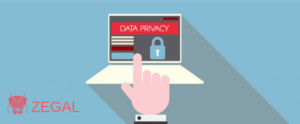What are the steps?
What is a Non-Disclosure Agreement (NDA)?
A Non-Disclosure Agreement (NDA), is a contract by which a party receiving information from another party agrees to keep such information confidential.
By signing a Non-Disclosure Agreement (NDA), the party receiving information agrees not to disclose, use or exploit confidential information, except in agreed circumstances or with the consent of the other party.
It’s also sometimes less commonly referred to as a Confidentiality Agreement. This is actually the British term for an NDA but the US English appears to have won out on this one and you’ll most likely hear or call them NDAs!
How to sign an NDA
Step 1: This NDA checklist will help you decide what you what to include
- Licenses: Are any licenses to use the material prohibited?.
- Third parties: If there are any instances when disclosure of the information to third parties, such as subcontractors is permissible.
- Return of Documents: To identify if a return of confidential information needs to happen at the end of a project or employment.
- Jurisdiction: If the businesses are in different countries, does the contract have a choice of law clause and jurisdiction in the event of a breach of contract? Also, where will the dispute resolution happen?
- Intellectual Property: You can include details on intellectual property rights in an NDA.
- Non-compete clauses: You can stipulate whether another may not take a job competing within a certain time frame.
Step 2: Decide who is signing, how long it should last for and, importantly, why you’re creating it.
You need to include:
- Information about the parties: this includes the name of the parties who share and receive the information.
- The time period for confidentiality: this includes the time frame for maintaining confidentiality through NDA.
- Definition of confidential information: an organization has to deal with a large chunk of data. So, it is very crucial to distinguish those data from the level of importance. The data which needs to be confidential should be properly categorized in the NDA agreement.
Step 3: Create your NDA
Use Zegal to build your non-disclosure agreement. Then include your co-signers and the document will be shared so they can read through and e-sign. Finally, ensure that everyone e-signs the agreement.
When should I sign an NDA?
There are numerous situations in which the topic of an NDA may arise, making this a rather difficult question to answer. It’s a ‘commercial’, not a ‘legal’ question. It’s important to balance appearing ‘ heavy-handed’ and overly legal with protecting your rights and your business secrets.
To help you with your decision-making, let’s take two scenarios: the first is a ‘must use an NDA’; the second is a ‘could use an NDA’.
Scenario 1: Your business is being approached by a competitor or financial institution with a view to purchasing or merging. Get an NDA signed immediately before you even answer the email!
Scenario 2: Your brand new startup is discussing seed fundraising options with potential investors. While it’s usually seen as somewhat heavy-handed to demand an investor sign an NDA when you haven’t really even got a revenue-producing business, you’re worried that the investor also has investments in similar competing startups. What if the investor is just kicking tires or worse actually wants to feed that information back to its investee companies? While highly uncommon in any professional investing organization, this is buyer-beware and you are quite within your rights to have them sign an NDA.
How long does an NDA last?
There is no hard and fast rule to decide the duration of an NDA because every business has its own requirement for data privacy and confidentiality. Normally an NDA should not last any longer than the expected period for which confidentiality is needed.
What does signing an NDA mean?
Whenever you are considering sharing valuable information about your business it is crucial to ensure that the other party doesn’t take the information and use it as their own.
An NDA ensures that all parties are agreed as to how information is to be treated. In turn, this strengthens the confidential business relationship whilst also protecting proprietary information and trade secrets.
Who is allowed to sign an NDA?
Anyone who has direct access to valuable information in an organization should sign an NDA. This protects the client information and also keep company data and future goals private from the external environment.
What is the purpose of an NDA?
A Non-Disclosure Agreement helps an organization to maintain confidentiality and privacy of information by binding their employees with a valid NDA contract.
A breach of an NDA contract could damage the future goals and plans of a business. A well-drafted NDA agreement can aid businesses and individuals to protect their sensitive data.
Is a Non-Disclosure Agreement legally binding?
Yes, a Non-Disclosure Agreement is a legally binding document. It requires the parties to maintain confidentiality throughout the term of the Agreement. This is set out in the NDA and could be as short as a few months or as long as several years. A breach of the agreement may result in arbitration.
Client case study
Leigh Wings from Jolion E&E Pte Ltd uses Zegal so the receiving information agrees not to disclose, use or exploit confidential information, except in agreed circumstances or with the consent of the other party.




